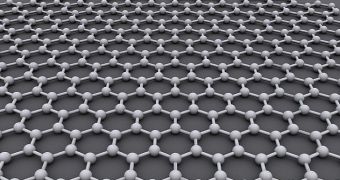Graphene is one of those things that could allow human technology to leap forward fifty to a hundred years, so to speak, but no one's figured out yet how to use it in the products they have in mind. Or, rather, no one knew how to do that until now.
Samsung has finally figured it out though. Not how to actually make great products out of it, that will still take a few years or decades. But it did find a way to commercialize it.
You see, graphene is considered great for, well, everything, because it is made of carbon molecules arranged in hexagons.
The single-atom-thick layers, obtained by shaving them off graphite, can supposedly enable super-capacity storage devices, super-fast processors, new and better displays, etc.
Unfortunately, most of their value stems from the strength of the molecule ties. And sectioning off part of a graphene significantly cripples it because you need to break some of those inter-atom links at the edges.
In layman terms, there hasn't been a method found to help graphene maintain all its properties in practical applications.
Samsung has an idea though, a method that synthesizes large-area graphene into a single crystal. When put on a semiconductor, the crystal maintains its electrical and mechanical properties.
And with its high heat conductibility, flexibility, electron mobility (hundreds of times better than silicon) and durability (better than steel), it will eventually be employed in new chips, interconnects and flexible displays.
Samsung intends to use its graphene crystallization method to build precisely flexible displays, like the ones we saw in concept art for the future. Say, tablets that can fold like a wallet but whose screen doesn't show evidence of having been bent like a sheet of paper after opening it.
Wearable gadgets are another market that Samsung is considering, but mostly its focus is on flexible screens for now.
Alas, Samsung did not provide an ETA for when flexible displays designed from graphene will come out. We're fairly certain that LG will be right on their tail when they do, though, assuming they don't manage to get there first. Given the acidic rivalry between these two companies, everything is possible. Especially with curved displays and lamps being a focus of LG at the moment.
Samsung solved the mystery of graphene through a partnership with a team of scientists from the Sungkyunkwan University. Now it can make “large area, single crystal wafer scale graphene.”

 14 DAY TRIAL //
14 DAY TRIAL //